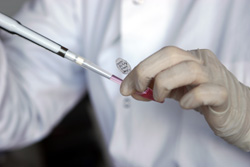Molecular activator for cellular senescence
Cellular senescence is an important mechanism for cancer prevention in mammals that involves normal cells losing their ability to divide while undergoing a series of metabolic and morphological changes. The process is activated by cells in response to physiological stress, such as DNA damage, which can cause the development of tumours. Senescence is also thought to contribute to the ageing of the entire organism and limit the renewal of normal stem cells. Cultured cells are analysed to determine the different physiological triggers for cellular senescence, including the genes that activate the process. Recent studies have revealed that senescent cells can be found within benign tumours and may prevent these tumours from becoming malignant. There is also evidence that stem cells - the body's master cells - experience senescence during ageing. However, the action of senescent cells within the actual organism and their subsequent fate is still not well understood. The EU-funded 'Modelling senescence' project is studying cellular senescence within the organism, rather than cultured cells. Researchers have created a technique where the senescence process can be turned on at will, enabling scientists to determine the effects of the process on both normal and cancerous tissues. Project partners have developed mice in which expression of the two main molecular activators of the process, the p16INK4a and p19ARF genes, can be induced in multiple tissues by administering tetraclycine. This allows scientists to experimentally generate senescent cells and determine their molecular and functional traits. Work conducted by the project consortium has provided the first genetic approach for studying this crucial biological process within tissues and organisms, rather than cultured cells. It will contribute to our growing understanding of the ageing process and cancer preventing mechanisms, as well as Europe's growing knowledge economy.







